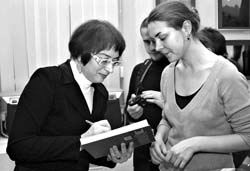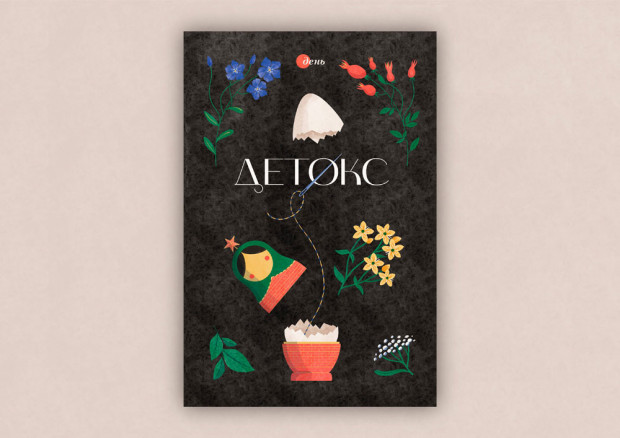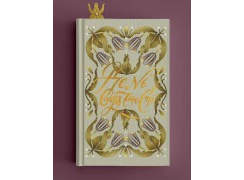First monograph on graphic arts in 15 years

Recently a relative of mine, a history student from Lausanne University, who is writing her M.A. thesis on the avant-garde artist Oleksandr Bohomazov, and I were looking for books on Ukrainian art of the 20th century. We found a couple of books and had to borrow the rest from professors, and then make Xerox copies. Most of these works were written by foreign scholars in collaboration with their Ukrainian colleagues, and published abroad. Therefore, it is easier to find them in libraries in Geneva, Munich, or Paris.
In view of this, the launch of Olha Lahutenko’s book Ukrainian Graphic Arts of the First Third of the 20th Century , which took place in the exhibition hall of the Art Development Foundation on Jan. 30, is an important cultural event. “Art exhibits open every day, sometimes three times a day, but we can’t even launch new books once every six months,” says Oleksii Rohotchenko, a member of the Artists’ Union of Ukraine. With the exception of Lahutenko’s book, not a single sizable monograph on graphic arts has been published in the last 15 years.
Ukrainian Graphics of the First Third of the 20th Century was released by Hrani-T, a promising young publishing company, with support from the Art Development Foundation. The work of compiling the illustrations (posters, cover designs, business cards, sketches, drawings, and paintings) took more than 10 years of research in private archives, libraries, and museum collections.
“In 1987, when I was preparing an exhibit at the Odesa Literary Museum, I saw many gorgeously illustrated books with interesting cover designs,” Lahutenko recalls. “That sparked my interest in graphic arts. Then my field research began, which became the subject of my Candidate of Science dissertation and later the first book on Ukrainian book cover designs. After it was published, I received written comments from experts at the British Library in London, Slavic Library in Prague, and Leipzig’s East European Institute, who told me they were pleasantly surprised by the sophistication of Ukrainian graphic arts of the early 20th century. I hope my monograph will also be of interest to them.”
“This work is invaluable above all because it deals with graphic arts as an artistic phenomenon,” says Tetiana Kara-Vasylieva, departmental head at the Maksym Rylsky Institute of Art at the National Academy of Sciences of Ukraine. “Mykhailo Boichuk, Heorhii Narbut, Vasyl Krychevsky — the author emphasizes that each of these may have followed a different path, but they all formed the principles of Ukrainian national art in the European context.”
Hrani-T Publishers are planning to issue a presentation album by Lahutenko this year. The subject will be the same, except there will be more illustrations and somewhat different comments and points of emphasis.






